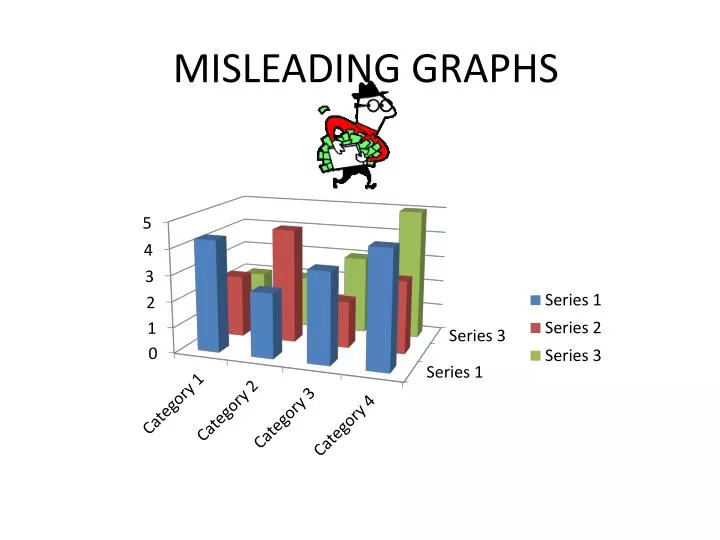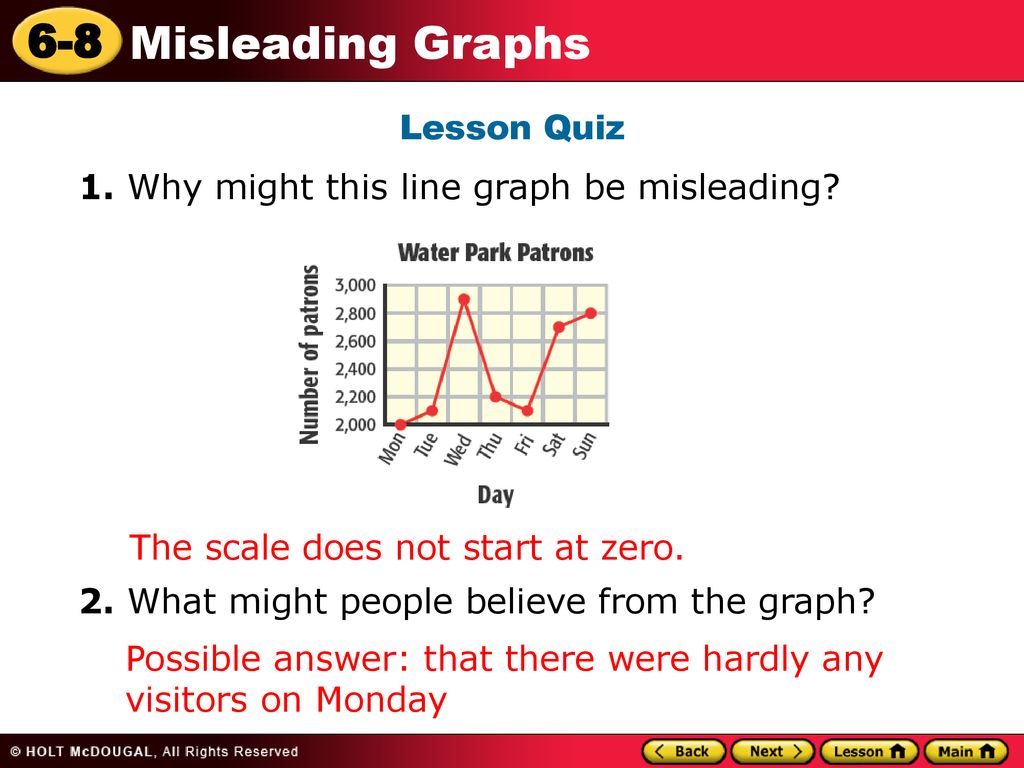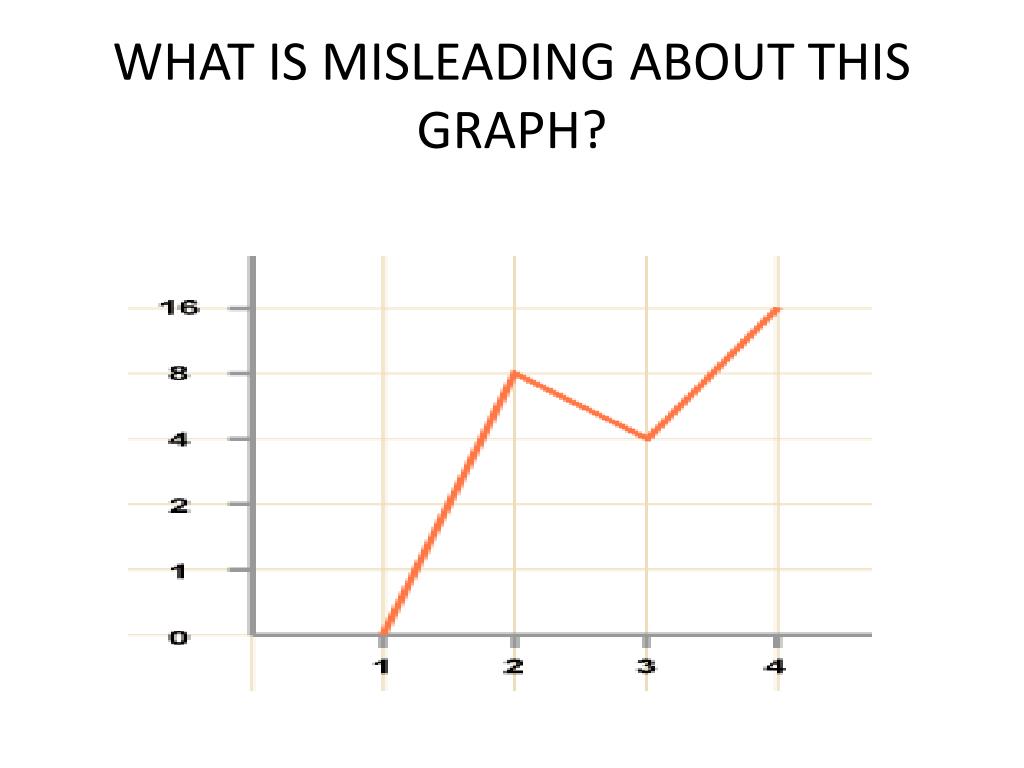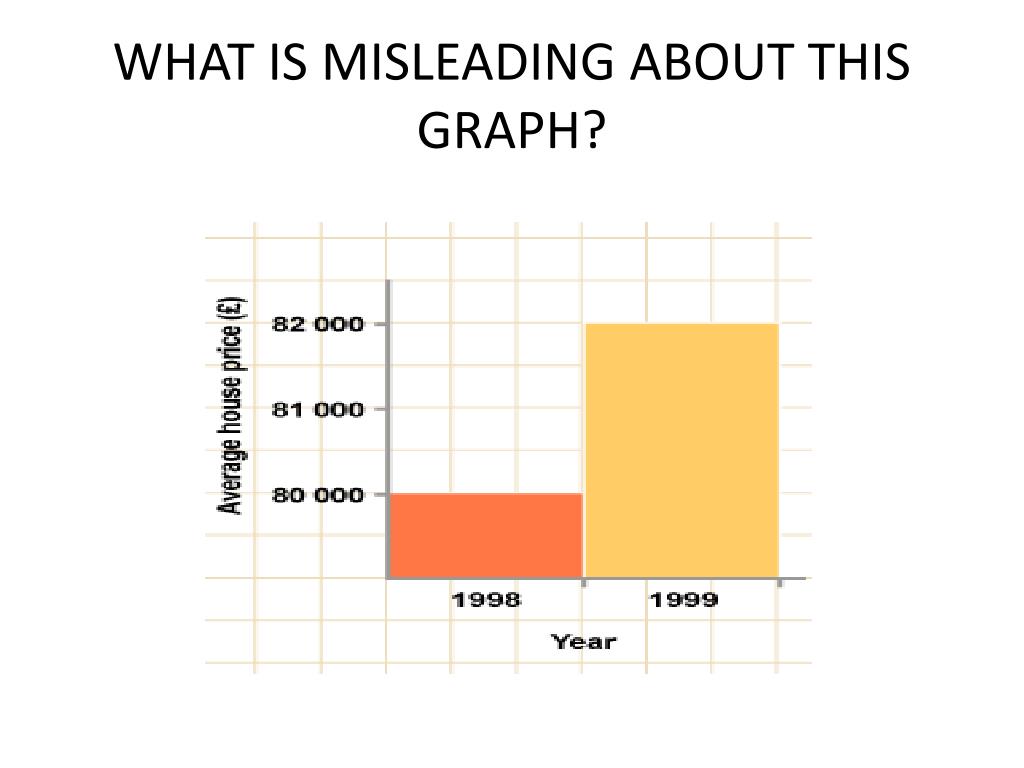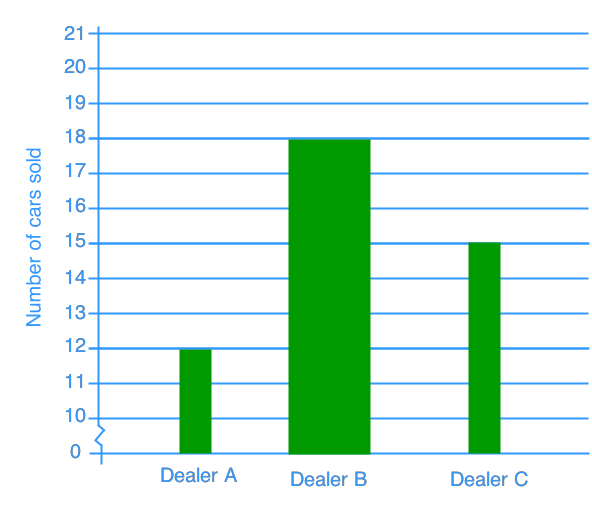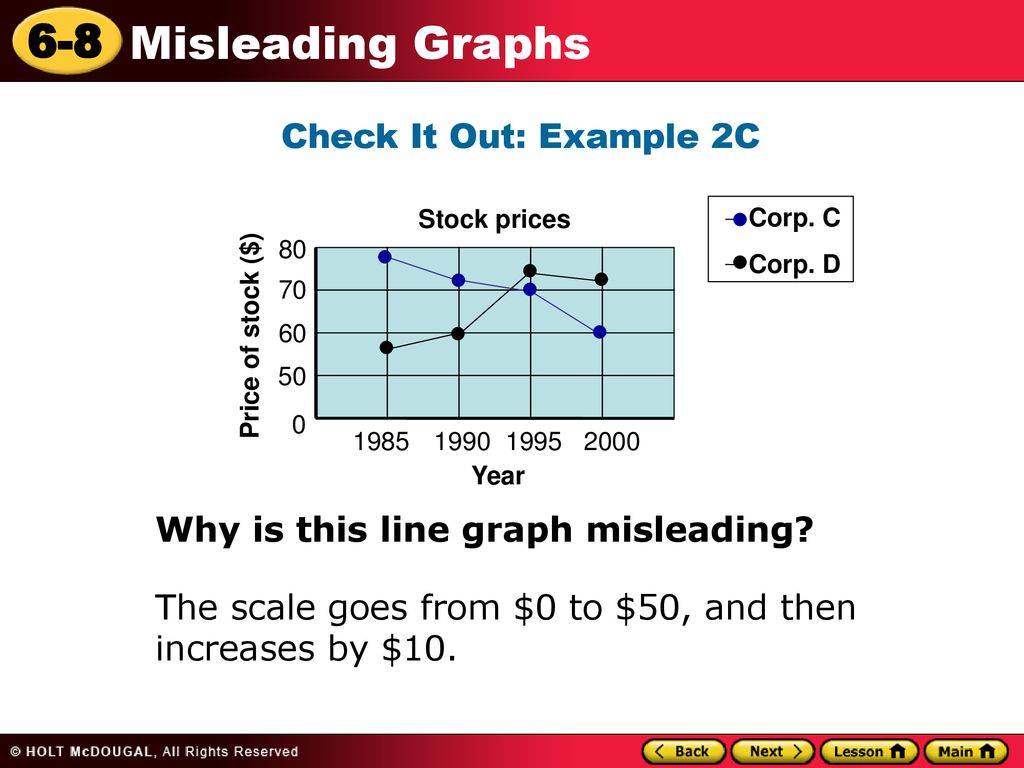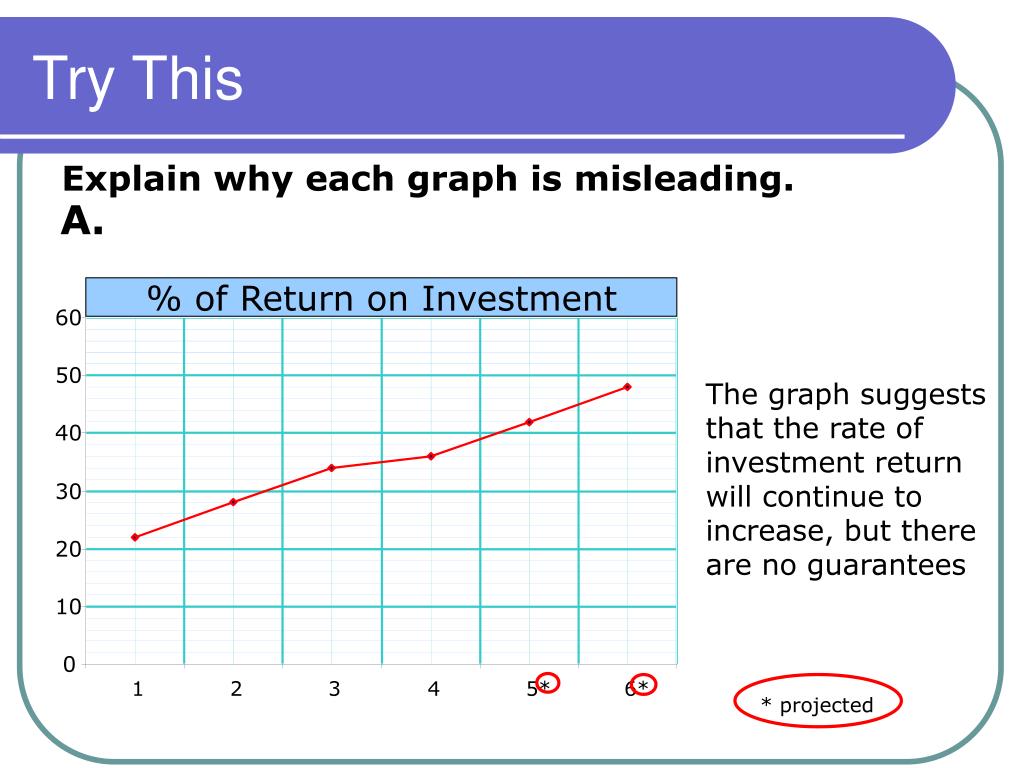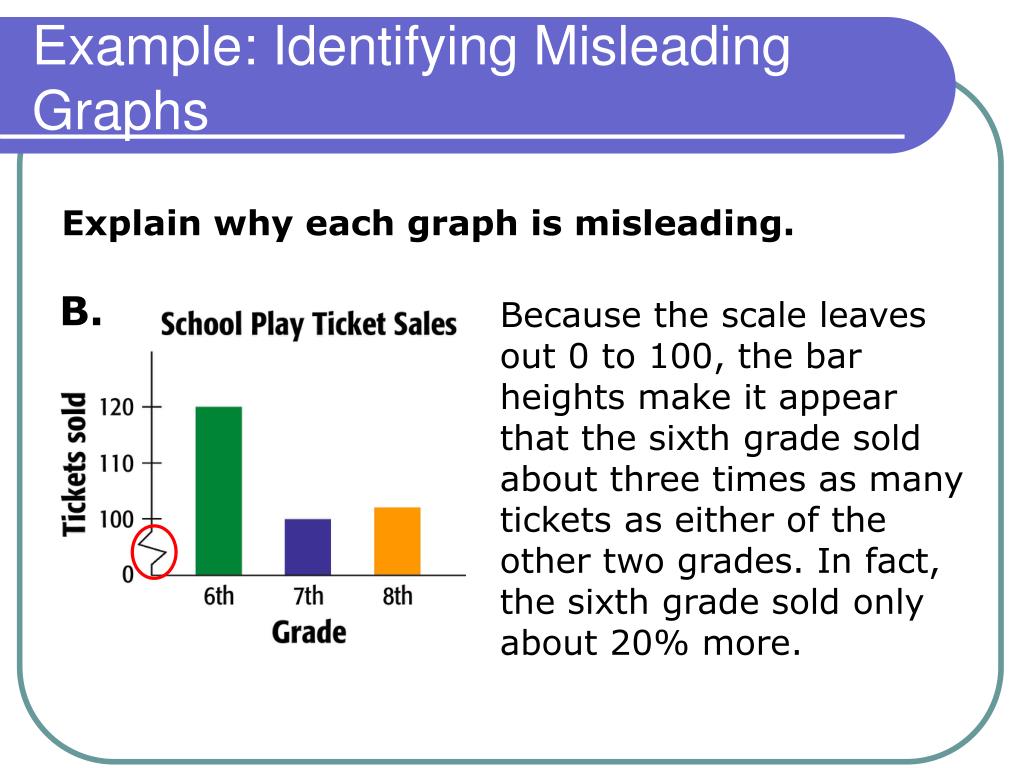Brilliant Tips About Why Might A Line Graph Be Misleading Excel Radar Chart Different Scales
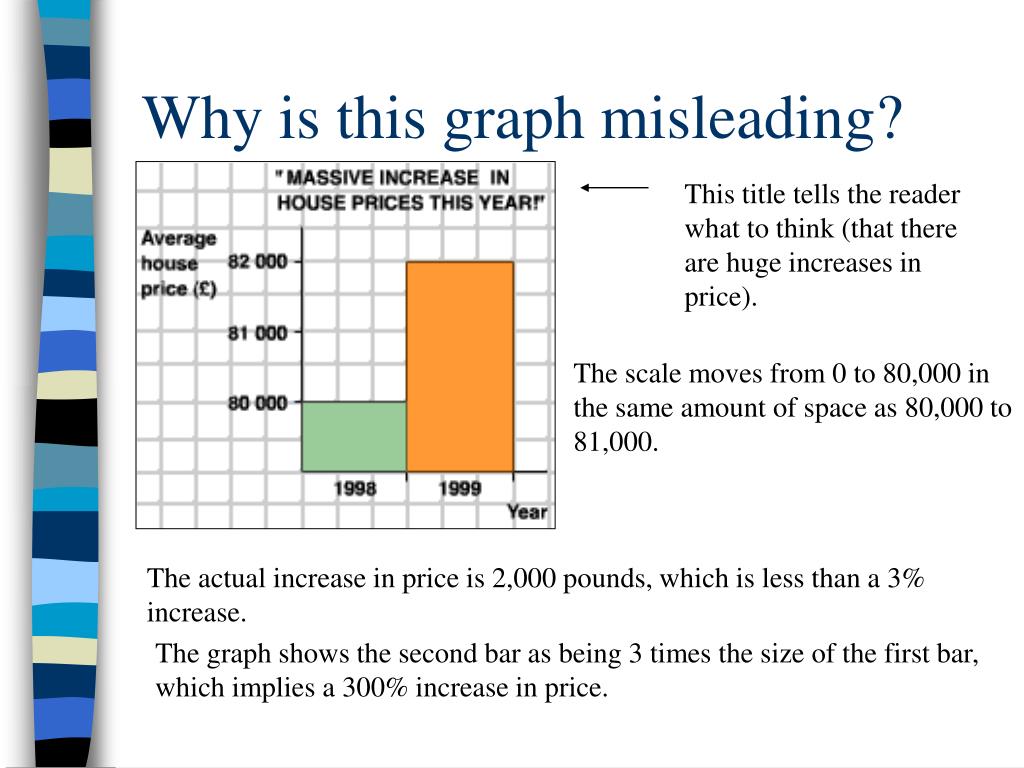
Some common features of graphs that may lead to incorrect interpretations are:
Why might a line graph be misleading. In statistics, a misleading graph, also known as a distorted graph, is a graph that misrepresents data, constituting a misuse of statistics and with the result that an incorrect conclusion may be derived from it. Other times, the underlying data may be incorrectly weighted due to a couple of outliers. But as visual software has enabled more usage of graphs throughout all media, it has also made them easier to use in a careless or dishonest way — and as it turns out, there are plenty of ways graphs can mislead and outright manipulate.
Graphs that have a missing baseline and start at some arbitrary number (34 on the fox news image) tend to be very misleading. Misleading graphs may be created intentionally to hinder the proper interpretation of data to argue/convince the people about something that supports them or accidentally due to unfamiliarity with graphing software, misinterpretation of data, or because data cannot be accurately conveyed. When interpreting graphs, there are three things you should always look for first:
This line graph accurately displays the data; For example, florida’s vast amount of coastline may contribute to the fact that it has a far higher incidence of shark attacks than any. This video explains how graphs and charts can be misleading and some of the common mistakes.
[00:01:12] this is one of the most common ways that graphs misrepresent data by distorting the scale. When they're used well, graphs can help us intuitively grasp complex data. The axes are labeled appropriately, and the scale is from 0% to 100%.
But as visual software has enabled more usage of graphs throughout all media, it has also made them easier to use in a careless or dishonest way — and as it turns out, there are plenty of ways graphs can mislead and outright manipulate. Glancing at the first bar graph, it appears that house prices have tripled. In the data visualization world, this is known as a truncated graph.
Sometimes, these graphics may have skewed scales that aren’t immediately apparent to a user. Graphs can be used to present data clearly and as a tool to aid calculations in the form of conversion graphs and travel graphs. Data presentation may be misleading because the study was poorly designed and conducted.
When collecting data, carefully considering how it will be measured, and later visually depicted, is the first step. Understanding misleading graphs in statistics is crucial for accurate data interpretation. However, you still might stumble upon a spurious correlation if your lines happen to overlap without any provable causal relationship.
It comes down to one basic lesson: If we start the scale at zero, as the second bar graph does, then the true picture emerges. Pay attention to the graph’s labels.
When you look at a graph and try to figure out if it’s a true representation of what’s really going on, check that baseline. A misleading graph may be created to intentionally bias the reader to a particular interpretation or accidentally by someone unfamiliar with creating an effective way to display the given data. The answer is the graph is misleading because each state on the graph has a different size coastline.
Here are some key ways graphs can be misleading: Which of the following graphs is most misleading? This misleading tactic is frequently used to make one group look better than another.





